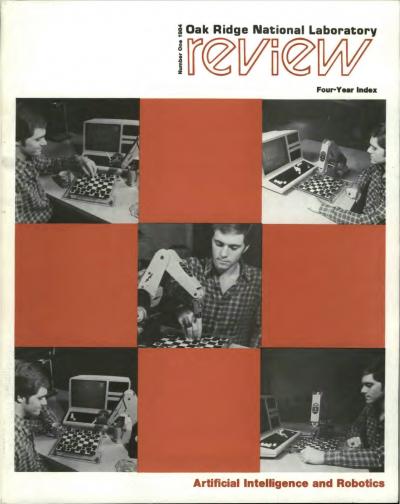ORNL Review v17n1 1984.pdf

- How Does ORNL Affect the Environment? ORNL's day-to-day operations for the most part have a beneficial effect on the human environment, although the impacts of its primary product—new scientific and technological information—are speculative. Slightly adverse impacts arise from releases of toxic materials from research activities; however, none of these releases is a threat to human health.
- Building a Better Ion Trap: Atomic Physicists Study Recoil Ions. A new technique developed at ORNL under the leadership of two university professors traps ions of very low energies. This "recoil ion storage" technique permits studies of the transfer of electrons from atoms during collisions with multicharged, low-energy ions and opens the way to future precision spectroscopy experiments on ions.
- The Mathematics of Artificial Intelligence. Mathematicians at ORNL are applying the principles of artificial intelligence to energy-related problems. Their goals include designing an economical, energy-efficient solar house and programming a robot to avoid obstacles so that it can operate in a hazardous environment, such as a nuclear reprocessing plant.
- Predicting Metal-Ion Toxicity: A Collaboration of ORNL Physicists and Biologists. ORNL physicists and biologists are collaborating in a search for fundamental explanations of the toxic effects of metal ions in biological systems. Their goal is to predict the degree of toxicity of metal ions and other chemical pollutants
- Sol-Gel and Gel-Sphere Technology: Powders for Power. Sol-gel technology, developed over a 25-year period at ORNL, has been used to make spherical, beadlike particles for nuclear reactor fuels. Today industry is showing interest in the technology for making ceramics of uniform composition for electronic and other nonnuclear applications. A researcher involved in the development of the prizewinning technology tells its history.
Departments
- Editorial. Herman Postma speaks out on ORNL and the environment.
- Take a Number
- Awards and Appointments
- Books. William S. Lyon reviews The Information Society as Post Industrial Society by Yoneji Masuda
- Four-Year Index

